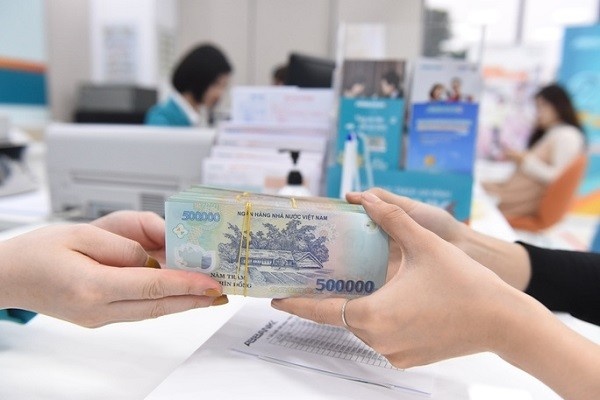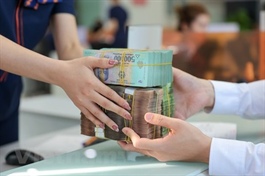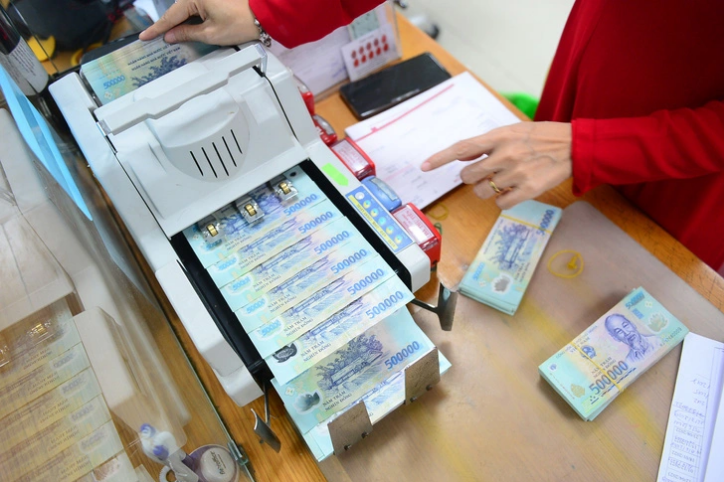Vietnamese businesses await relief as SBV slashes interest rates
Vietnamese businesses await relief as SBV slashes interest rates
Vietnamese businesses anticipate some relief as the central bank slashes interest rates amidst the economic challenges, with credit growth expected to accelerate in the second half of 2023.

In early March, the Ho Chi Minh City Business Association (HUBA) released a survey conducted among over 100 enterprises, shedding light on their production and business activities up to February. The survey revealed that 83 per cent of the companies were grappling with significant challenges.
Among the primary obstacles cited were high borrowing costs (43 per cent), a contracting market (41.2 per cent), limited access to capital (40 per cent), complex loan procedures and lengthy processing times (38.2 per cent), excessive inventory levels (30.1 per cent), and rising input prices (17.6 per cent).
In response to these findings, HUBA has recommended a reduction in interest rates to ease the financial burden.
The idea that high interest rates hamper businesses has been frequently echoed in the media, and has been accompanied by sluggish credit growth. This has inevitably exerted pressure on the government, the State Bank of Vietnam (SBV), and the banking sector.
Responding to these concerns, on March 14, the SBV unexpectedly announced a cut in the policy interest rate, even as the US Federal Reserve had yet to signal an end to its rate hikes.
By the end of March, the SBV had further reduced interest rates, and by late June, a total of four rate cuts had been implemented. Concurrently, commercial banks have taken decisive measures to reduce lending rates and provide support to struggling customers.
Market observations indicate that several commercial banks have uniformly lowered lending rates by 0.5-1 percentage points for both existing and new loans.
Some banks have implemented even larger cuts of 1 percentage point or more for consumer loans secured with collateral, working capital supplements, or new loans for business operations.
However, the optimistic outlook projected by HUBA's survey, indicating improved orders from the second quarter of 2023, has failed to materialise as expected.
In the first half of 2023, Vietnam's economy experienced a growth rate of 3.72 per cent compared to the same period last year, significantly lower than the 6.46 per cent recorded in the first half of 2022 and the official target of 6.5 per cent.
Dinh Duc Quang, head of Treasury and Markets at UOB Vietnam, attributed this lacklustre performance to reduced production activity and weakened external demand.
Phan Thanh Tinh, director of Viet Au Seafood Co., argued that the current hurdles faced by firms cannot be solely attributed to high interest rates. He emphasised that domestic consumption has also declined, signalling a contraction in the overall economy.
Moreover, Vietnam's economy heavily relies on exports, and any downturn in export activities inevitably has consequences for the country's economic aspirations.
"While many businesses are in dire need of lower interest rates, for manufacturing companies, reducing interest rates alone is insufficient. Companies burdened with existing loans may benefit from lower rates, but those experiencing a 60-70 per cent decline in sales revenue pose questions about the purpose of new loans. Without orders, there is no production," said Tinh.
Even with the allocation of VND4 trillion ($166.7 million) at a 5 per cent annual interest rate to support businesses in resuming their production and operational activities, banks have struggled to disburse loans. Even organisations that have been regularly repaying their loans have refrained from seeking additional borrowing.
SBV Deputy Governor Dao Minh Tu explained that the sluggish credit growth can be attributed to the economic difficulties faced by various sectors, a decline in investment and consumer demand, high inventory levels, challenges faced by struggling enterprises, and difficulties when exporting.
"Banking leaders have mentioned that some businesses meet the necessary loan requirements, but they do not currently have the desire to borrow," Tu added.
Will credit accelerate in the second half of the year?
Despite the continuous reduction in interest rates and the recognition that high interest rates are not the primary cause of limited access to capital, Tim Leelahaphan, an economist overseeing Thailand and Vietnam at Standard Chartered Bank, forecasts that the SBV will further reduce the refinancing rate by an additional 50 basis points in the third quarter.
This would bring the policy rate to 4 per cent – the same level seen during the pandemic – and maintain it until the end of 2025.
Alongside interest rate cuts, the SBV has relaxed loan terms, including allowing loan deferments of up to 12 months at reasonable interest rates.
Leelahaphan shared, "The next rounds of interest rate cuts will not exceed 50 basis points due to concerns about inflation and ongoing financial instability."
Yun Liu, an ASEAN Economist at HSBC Global Research stated, "We anticipate the SBV will further reduce the policy rate by 50 basis points in the third quarter of 2023, bringing it to 4 per cent. This could potentially reverse the tightening measures implemented by the SBV in 2022."
Regarding this matter, Tran Thi Khanh Hien, director of Research at MB Securities JSC, believes that credit growth will accelerate in the second half of 2023 based on several positive indicators.
Hien expects export growth to rebound from a low base compared to the same period last year, while the resumption of robust Chinese consumer demand following the easing of restrictions will provide a boost.
Customs data reveals that in the first half of June, the import value of goods by foreign-led enterprises reached $368.75 million, an increase of 8.2 per cent compared to the latter half of May.
She also highlighted that the impact of reduced lending rates is rekindling the demand for borrowing among individuals. Fiscal policies, such as the reduction of VAT from 10 to 8 per cent and proposed corporate income tax reductions, are expected to stimulate consumer demand.
The real estate market is projected to recover from the fourth quarter of this year as the Ministry of Construction resolves legal obstacles for ongoing projects, and the draft Land Law, approved by the National Assembly in October, comes into effect.
"In addition, with a positive growth rate of 4.2 per cent in the first half of the year and credit expansion in line with the system's scale, there is abundant liquidity available for banks to lend," added Hien.
Nguyen Thi Phuong Thanh, an analyst at VNDIRECT Securities Corporation, also anticipates a recovery in consumer demand in the second half of 2023, supported by lower borrowing costs and the government's push for public investment.
Thanh remarked that state-owned commercial banks, as a key channel for government capital distribution, are expected to benefit significantly from increased public investment and potentially achieve higher credit growth than other banks in the industry.
Additionally, Thanh mentioned that Techcombank, HDBank, VPBank, and MB are likely to experience stronger credit growth in 2023 due to factors such as abundant liquidity for Techcombank and MB, strong capital buffers for VPBank and Techcombank, and planned support for the restructuring of weaker credit institutions such as Vietcombank, HDBank, and MB.
In a noteworthy development, Circular No.06/2023, recently issued by the SBV, proposes additional regulations concerning ineligible loan purposes. These regulations include debt restructuring, deposit placements, equity contribution payments, the purchase and transfer of capital shares in non-listed joint-stock companies, and the payment of capital contribution or investment cooperation agreements for projects that are eligible.
Economists suggest that these supplementary regulations will provide an accurate reflection of credit quality and encourage businesses to list on the stock exchange.
However, as commercial banks typically focus on fixed interest rates and the purpose of loan disbursements, rather than monitoring the business performance or repayment capacity of borrowers (in the case of loans for capital contributions), lending for these purposes may carry inherent risks, including potential increases in non-performing loans in the future.
"While the stricter lending regulations may temporarily impede credit growth, they will ensure the overall safety of the economy in the long term. Alongside the reduced lending rates, we still expect the system's credit growth to accelerate in the second half of 2023 and climb by 10 per cent compared to the previous year-end. However, this is lower than the SBV's target of 14-15 per cent," concluded Thanh.
In a related update on July 10, the SBV adjusted this year's credit growth target for credit institutions, with an estimated system-wide growth rate of approximately 14 per cent.




















